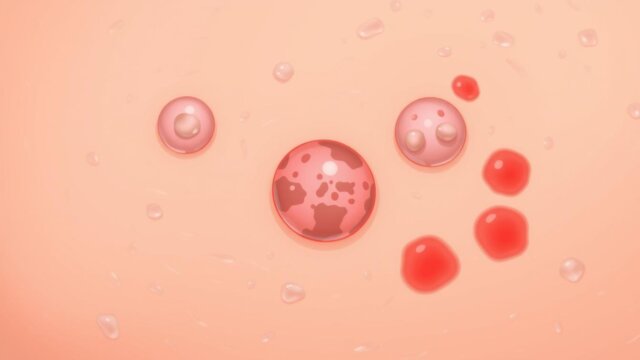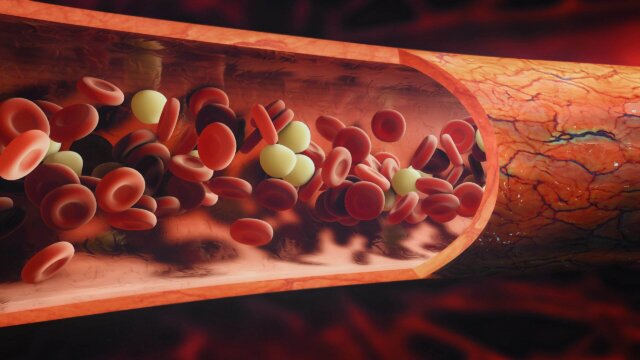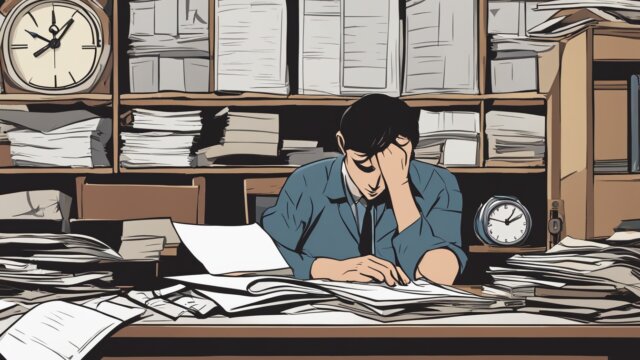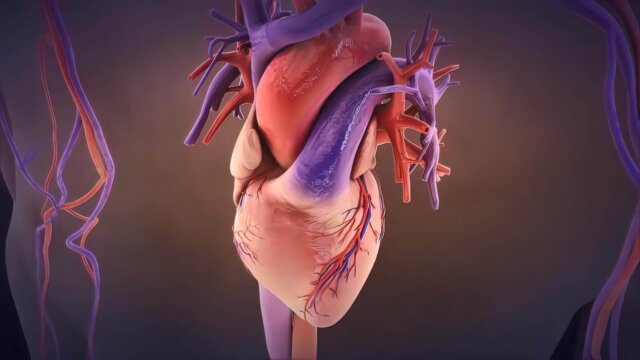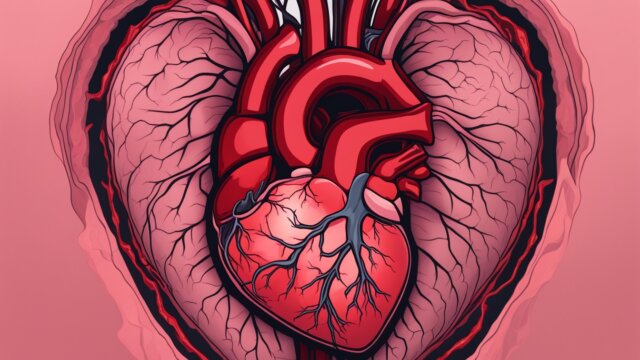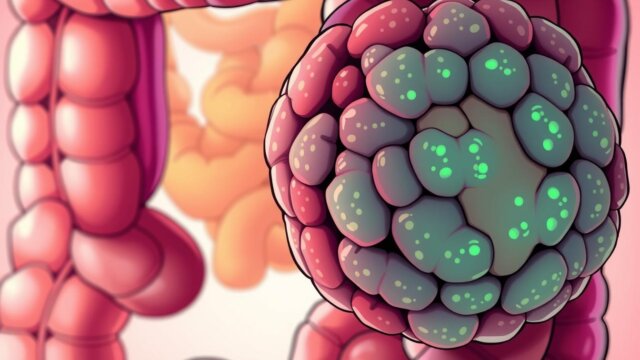FTC disclaimer: This post may contains affiliate links and we will be compensated if you click on a link and make a purchase.
Migraines are more than just a common headache. They can be very painful, causing issues like seeing strange things, feeling sick, and not being able to handle bright light or loud sounds.
People often look for natural ways to deal with these symptoms. This includes everything from putting something cold on their head to taking certain herbs. Such methods might help along with medicine for some.
Key Takeaways
- Putting cold on your forehead, scalp, or neck might ease migraine pain. We don’t exactly know why, but it seems to work.
- You can use some painkillers you buy at the store like acetaminophen, ibuprofen, or naproxen. They’re good for migraines and you don’t need a doctor’s note to get them.
- A bit of coffee or tea might help your body use migraine meds better. But, drinking too much can be bad because you might not feel good when you stop.
- Making the room dark and quiet can make your migraine hurt less. Big lights and loud sounds could make it worse.
- Being active a lot can stop migraines from happening. It makes you less stressed and sleep better which are good for not getting migraines.
Applying Cold and Heat
Cold and heat help with migraines naturally. In the US, about 39 million adults suffer from migraines and headaches. Migraines cause people to miss about 157 million workdays a year. They also lead to a lot of healthcare costs and lost work money, adding up to around $36 billion annually.
Placing an ice pack on your forehead, scalp, or neck could ease your migraine. It’s not clear why ice helps, but it may slow down blood flow. Ice lessens swelling too. This happens as cold makes blood vessels narrow and limits the release of substances that make things swell. A frozen gel pack or a cold, wet washcloth can also work.
Laying cold or warm compresses on your head could calm you and lessen the headache pain. The warmth opens up blood vessels, relaxes tight muscles, and soothes a tension headache. Both hot and cold methods also cut down on stress and tension. So, they help with headaches caused by stress. Hot and cold packs are natural ways to handle migraines and headaches without medicine.
“Cold compresses have been shown to reduce the intensity of acute headaches, as supported by numerous studies.”
You can use ice, heat, or both for migraine relief. It’s an easy and natural method to try at home.
Over-the-Counter Pain Relievers
Looking for migraine relief? Start with over-the-counter (OTC) pain pills. The most used are ibuprofen, naproxen, and aspirin. Tylenol is also good but not as helpful with swelling as the others.
Research proves these meds work well for migraines. In a 2013 study, ibuprofen helped half the people with their pain. And, in 2020, naproxen was better than a fake pill for easing migraine pain. Even aspirin, in larger doses, can help according to a 2014 study. Acetaminophen is not as strong but still beats a fake pill for some relief.
But, OTCs have side effects. Ibuprofen and naproxen can hurt your stomach and might raise ulcer risks. Taking them too often can even cause more headaches.
For others, mixing OTC with other meds works better. Some like aspirin, acetaminophen, and caffeine together might be more help. But remember, no alcohol with acetaminophen.
If OTCs don’t work, there are more options. Special prescriptions like rizatriptan, sumatriptan, and others help. Preventive drugs, including some for high blood pressure, can also be used.
It may take some time to find the right fix for your migraines. Keeping track of when and why they happen can guide your treatment plan.
Caffeine in Moderation
Caffeine is in coffee and other drinks. For some, it helps lessen migraine pain. But too much or stopping suddenly can make migraines worse. It’s important to use caffeine carefully if you have migraines.
Over 85% of Americans use caffeine every day. They have about 200mg a day. Some can get dependent on it in just 7 days. Even tiny doses of 18mg can affect 30% of people. Your genes also decide if you might get hooked on caffeine and how bad you’ll feel if you stop.
People with bad migraines are told to stop caffeine for a few months. After that, they should only have it two days a week. This helps stop headaches that come back worse after drinking caffeine again. So, how much caffeine you have really matters for people with migraines.
Even coffee without caffeine can have a little bit in it. A test found almost 7mg in an 8 oz cup of Starbucks decaf. So, watch out for all ways you might be getting caffeine if you’re trying to cut back. This is important for managing your migraines well.

“Caffeine abstinence was independently associated with an excellent efficacy of acute treatment (multivariate odds ratio, 3.2; 95% confidence interval, 1.2–8.4; p = 0.018) after controlling for covariates.”
A recent study shows quitting caffeine can really help with migraine pain. People who stopped had much better results than those who kept drinking caffeine. So, cutting back or quitting might be the best move for migraine relief.
Even though caffeine can help for a while, be careful about using it too much. It can lead to needing it every day. Finding the right mix of treatments might be the best way to keep migraines at bay. This includes looking into migraine natural treatments, home migraine remedies, and using essential oils for migraines.
Finding a Quiet, Dark Room
When you have a migraine, a quiet, dark room is great for relief. Light and noise can make the pain worse. They bother your senses and make you feel worse. Being in a dark, calm place helps you get better faster. It stops too much light or sound from hurting you more.
To make it soothing and dark, close the blinds to keep out the sun. Turn off any bright lights or gadgets. Some like to paint their special “migraine room” a dark, peaceful color, like burgundy, for extra calm. Use an eye mask or curtains that block out light to make it even darker.
Taking care of noise is also key in your quiet room. Turn off the TV, radio, or any loud sounds for peace. Soft music or nature sounds can make it even more relaxing. Talking with a migraine doctor can help too. They might have treatments that make the pain go away.
Having a quiet, dark place lets your brain rest from the migraine. This and other migraine relief home cures and home migraine remedies are good ways to handle the pain.

“Retreating to a dark, quiet room can help speed up recovery during a migraine episode by reducing sensory stimulation that may worsen symptoms.” – Migraine Specialist
Regular Exercise
Regular exercise can really help with migraines. It’s best not to work out when you have a migraine. But doing exercise regularly, even when you feel good, can stop headaches before they start. Studies say people who move less tend to get more and worse migraines. Being active makes it easier to handle migraine pain and lowers how often they happen.
Finding a good exercise level is key. Things like fast walking, running, and dancing can make migraine symptoms less severe. It’s smart to work out for 30 minutes, 3 times a week to feel the benefits. Also, keeping a log of your workouts and headache days can show you how exercise affects you.
Exercise helps migraines in many ways. It boosts your body’s feel-good chemicals, like endorphins, and a mood-lifter called enkephalin. This reduces how bad and often migraines happen. It also cuts down on stress and can help you sleep better, which are common triggers for migraines.
Still, doing very hard workouts can start a migraine. The pressure from working out hard, not drinking enough water, and tight muscles can be a problem. Some found that intense spinning can even make their migraines worse if they usually get headaches from exercise. Starting slow and working up slowly is the best way to reduce these risks.
Yoga and tai chi are also good for migraines. Yogi who do it often see fewer and less severe migraines. And a group doing tai chi had fewer headaches and better blood pressure than a group who didn’t do it.
So, making exercise a regular part of your life can be good for managing migraines. There are many ways to stay active. As you find what works for you and listen to your body, you’ll feel better. Plus, your overall health will improve too.

Exercise Type | Impact on Migraines |
|---|---|
Moderate Aerobic Exercise | Reduces migraine frequency and intensity |
High-Intensity Exercise | May trigger migraine attacks due to increased blood pressure, dehydration, or muscle stiffness |
Yoga | Significantly lowers the frequency and intensity of migraines when practiced 5-6 times per week |
Tai Chi | Reduces migraine frequency and improves blood pressure when practiced for 1 hour per day, 5 days per week |
Before starting any new workout plan, talk to your doctor. This is especially important if you take medicine for migraines. Think about how you’ll work out, what you’ll wear, drink enough water, and watch for things that might start a migraine. Doing these things makes sure that your plan is good for managing migraines safely3..
Getting Enough Magnesium
Migraines can really slow you down, but the answer might be in your kitchen – magnesium. Studies show that not having enough magnesium might cause migraine attacks, especially ones with aura or around periods. And get this, half of folks who get migraines likely don’t have enough magnesium, unlike those who don’t get them.
Now, adding magnesium to your diet could help with treating and stopping migraines. For keeping migraines at bay, aim for 400 to 500 milligrams each day. But always talk to your doctor first. You see, too much magnesium can cause big problems, like a bad heart rhythm, very low blood pressure, slow breath, and even coma.
Want to go the food route for magnesium? Dark greens such as spinach and chard are top picks. They offer 38 to 40 percent of your needed magnesium in just a cup. For expectant moms, 350 to 400 milligrams of magnesium in pill form daily might help lessen migraine pain.
But here’s the thing: magnesium isn’t always easily absorbed by the body. This is why many magnesium supplements are mixed with amino acids to help with absorption. And the kind of magnesium you choose matters. Magnesium comes in many forms, like oxide or citrate, each with its own ability to be used and affect the body.
So, whether through supplements or diet, more magnesium might cut your migraine troubles. And always, check with your doctor before changing your health plan much.

Prioritizing Sleep
Getting enough quality sleep is key for handling migraines. Too little or too much sleep might trigger a headache. Try to sleep 7-8 hours each night. Keep your sleep times regular. This can lower the chances of getting a migraine and make them less severe.
Bad sleep habits can make migraines worse and happen more often. It’s helpful to have a bedtime routine and a sleep-friendly place. Make sure your room is cool, dark, and quiet.
If you can’t sleep well, try relaxing activities like meditation or deep breathing. Also, stop using screens and doing exciting things before sleep.
Focusing on sleep is a big part of managing migraines naturally. It can lower how often you get migraines and how bad they are. This improves your health and life in general.
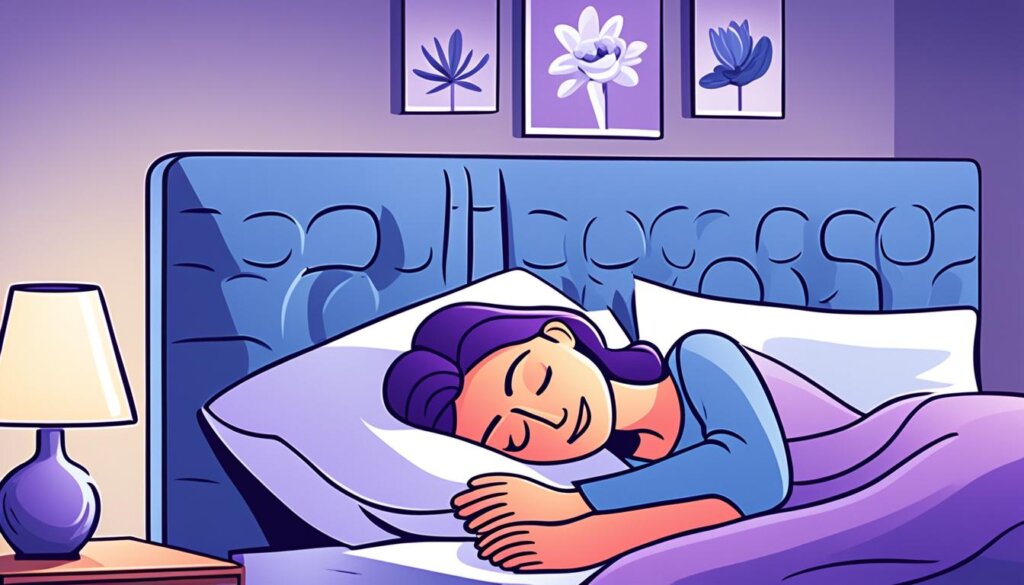
“Sleep is a powerful migraine natural remedy. Establishing a consistent sleep schedule and creating a sleep-conducive environment can go a long way in preventing and managing migraine attacks.”
Yoga
If you’re looking for ways to handle migraines at home, yoga might help. It focuses on breathing, meditation, and poses. These have been found to help with migraine episodes.
A study in Neurology showed that yoga could lower headache frequencies. People who did yoga had fewer severe headaches than those on medicine alone. They also could cut their medication in half.
Some specific yoga kinds, like Hatha and restorative yoga, are good for migraines. Certain poses, including Sukshma Vyayama, and Shavasana, work well for migraine pain. If you get migraines, poses where your head is above your chest might be better. Using a head wrap during yoga can also help by putting light pressure on your head and eyes.
Yoga doesn’t just help with pain. It can also lower how often and how bad your headaches are. Yoga makes your heart better at its job, which might keep migraines away.
Poses like the child’s pose calm you down and help with chest pain. The downward dog can improve brain blood flow, which might ease a migraine. And the corpse pose can help your body deeply relax, which might help during a migraine attack.
Doing yoga every day, not just when migraines start, is better. A 2020 study showed that doing yoga five days a week was great for migraine relief. It’s also great for handling stress, a big migraine cause.

“Yoga can change the game for those with migraines. It uses exercises, breath work, and meditation, addressing what starts migraines. This offers a natural way to deal with migraines.”
Vitamin B2 (Riboflavin)
Are you fighting migraines? Adding vitamin B2, called riboflavin, to your care can help. Taking 400 mg daily for 3 months cuts down migraine numbers and pain. B2 is safe to take a lot, but it’s smart to talk with a doctor first.
Riboflavin helps the body in many ways. It’s key for healthy cells. You can get it from foods like milk, meats, and green veggies. It’s also part of vitamin B complex.
For easing migraines, 400 mg each day is the usual suggestion. It might take a while to work, like 6-8 weeks. For the best help, use it with less severe migraines or just sometimes.
Pick good riboflavin supplements from trusted places for safety. Always ask a doctor before using, especially if on other medicines.

“Riboflavin is taken for a variety of conditions such as acne, muscle cramps, burning feet syndrome, carpal tunnel syndrome, eye conditions, high blood pressure, burns, liver disease, and sickle cell anemia.”
More proof is needed, but adding riboflavin to your migraine plan might help some. It could lower how often and how bad your headaches are.
Exploring Effective Natural Remedies
There are also natural ways to ease migraine pain at home. For instance, putting cold or warm cloths on your head can be calming. It might lessen migraine pain. Also, taking over-the-counter painkillers as soon as you feel a migraine coming can help.
To manage migraines, think about getting enough magnesium. Try stress-reducing activities like yoga. And always stay hydrated. Some studies show that herbs like feverfew, butterbur, and ginger may ease migraines too.
Everyone’s body is different. Paying attention to what you eat and how you feel can help. With patience, you can find what works best for you. Then, you can better control and reduce your migraine symptoms.
“A 2013 study showed that ginger powder’s benefits were comparable to those of sumatriptan, a common prescription migraine drug, but with fewer side effects.”

Feverfew
If you’re looking for natural ways to ease migraine pain, feverfew might be your answer. It’s a plant that looks like a daisy. It has been a folk remedy for centuries. Some studies say it works a little better than fake treatments in easing migraines and lowering headache pain.
A survey in Great Britain found that over 70% of 270 migraine patients felt a lot better by eating fresh feverfew leaves daily. Other studies showed dried feverfew leaf capsules can cut down migraine numbers for those who suffer a lot. When mixed with white willow extract, feverfew also helped lessen how often and how hard migraines hit participants.
Experts found that feverfew extracts stop certain chemicals from leaving blood cells. This might help stop migraines. A 1996 study on feverfew use for migraines showed good results too.
The right dose of feverfew for relieving migraines is usually 50 to 100 mg a day. It’s best if this dose has 0.2 to 0.35% parthenolides. These are the good parts of feverfew. Still, we need more studies to be sure of the benefits and risks of using feverfew for migraines.
Before using feverfew, talking to your doctor is very important. This is because feverfew might not be safe with some drugs. It could also lead to tummy pain, upsets, and allergies for some people.
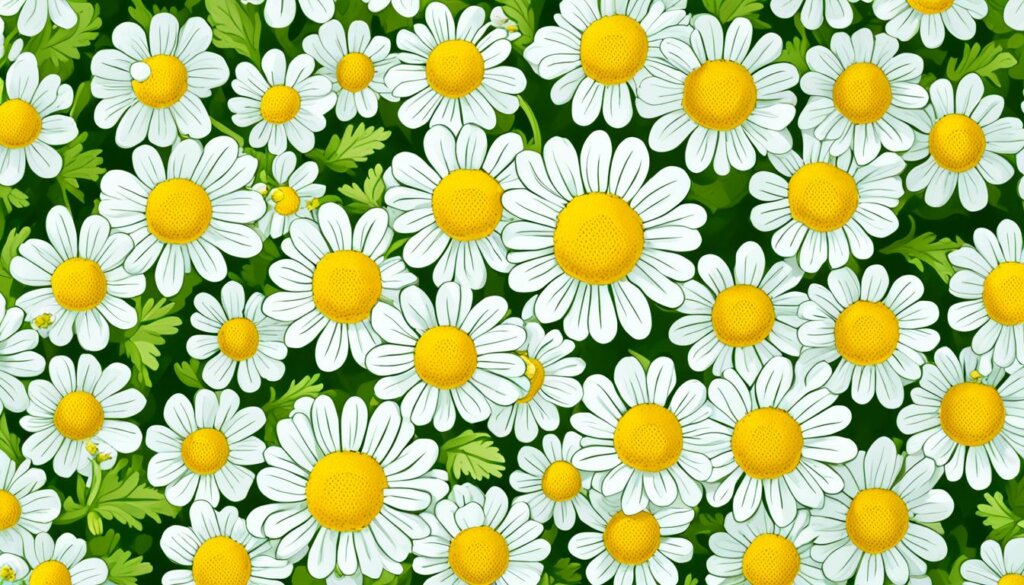
Feeling the urge to try feverfew to fight your migraines? Make sure you ask a doctor first. Keep to the right dose and consult your medical team. If used correctly, feverfew could be a good addition to your plan to combat migraines.
Staying Hydrated
Keeping hydrated is key for those who have migraines. One out of every three migraine patients says not drinking enough water can start a headache. Being dehydrated can make you feel grumpy, not able to focus, and even make your migraine last longer. If your body is lacking water, you may need quick medical help.
Aim to drink 2 liters of water every day to dodge dehydration headaches. Also, enjoy water-heavy foods like fruits, veggies, soups, yogurt, and cottage cheese. According to a Nutrition Reviews study, those with headache-causing dehydration found relief 30 minutes after drinking fluids.
It’s vital to drink more when you work out or it’s hot outside because sweat makes you lose water fast. Research shows that adding six cups of water daily can lower the pain and decrease headache hours by 21. The ideal daily water intake is between 64 to 80 ounces to match what your body loses.
Keep a log to track your headaches and find a link between them and dehydration. Signs of needing more water include dry mouth, tiredness, thirst, dry skin, headache, dizzy spells, and feeling like you might faint. Dehydration often triggers migraines. It’s important to keep a balance of water and salt to steer clear of issues like low blood pressure or holding too much water.
Choose fresh water over sugary drinks or alcohol since they don’t hydrate as well. Foods high in water content, drinks with electrolytes, and herbal teas also assist in staying hydrated.
While drinking more water won’t solve all migraine woes, it might lower how often they happen if you avoid dehydrating habits. Many studies have looked at water’s role in migraine prevention and management. They underline the need to stay hydrated to reduce the effects of this painful condition.
Other Home Remedies for Migraines
Migraines can be really hard to deal with. Over 90 percent of those who have them can’t work normally during an episode. Luckily, finding and avoiding triggers can help a lot. By tracking your symptoms, you can find what causes your migraines. Then, you can stop them from coming back.
Common Migraine Triggers to Avoid
Many migraine triggers are in foods we eat. For example, red wine, aged cheese, and cured meats might cause problems. Alcohol for many people also brings on migraines. Elements around us like bright lights, high places, and strong smells can do the same.
Keep a journal to note your symptoms and possible triggers. This might help you figure out which things start your migraines. Then, you can work to avoid those triggers.
Conclusion
Migraines are tough, but many natural remedies can help. You can use ice or heat, take pain pills, lower stress, and add vitamins. These ways might reduce the pain from migraines. Yet, for strong or often headaches, seeing a doctor is key. They can make a plan just for you to tackle the real issue.
Trying home-based solutions backed by science is smart. Add more water, sleep better, and do calming activities like yoga. Doing these can cut down how often you get migraines and how bad they are. It’s good to mix these DIY solutions with doctor’s advice. This mix could be the best way to deal with your migraines and make life better overall.
To handle migraines, mixing DIY fixes with professional help is vital. This way, you get a special plan just for you. It works in harmony and aims for great results. Don’t forget, you can manage your migraines well with the right help.
FAQ
What are some effective home remedies for migraines?
Many natural ways may help with migraine symptoms. These include using cold or heat. Also, over-the-counter painkillers, stress management, and taking certain vitamins and minerals can be effective.
How can applying cold and heat help relieve migraine symptoms?
Putting an ice pack on your forehead, scalp, or neck may lessen pain. It does this by reducing blood flow. You can also use a frozen gel pack or a cold, damp washcloth. This helps some people find comfort and reduce migraine symptoms.
Can over-the-counter pain medications provide relief for migraines?
Over-the-counter medicines like acetaminophen, ibuprofen, and naproxen can help. They manage migraine pain without needing a prescription.
How can caffeine impact migraines?
Caffeine in coffee and other foods/drinks might help a bit. But too much caffeine or suddenly stopping can make migraines worse. It’s best to use caffeine in moderation for managing migraines.
How can a quiet, dark room help during a migraine attack?
A quiet, dark room can be a big help during a migraine. It reduces things that can make symptoms worse, speeding up recovery.
How can regular exercise help prevent migraines?
Exercising may not be good during a migraine. But keeping a routine when you’re well can prevent future episodes. It helps by releasing endorphins, reducing stress, and improving sleep.
Can magnesium supplements help with migraines?
Magnesium supplements might help, especially if you have a deficiency. They’re shown to treat and prevent migraines. But always check with a doctor before taking any.
How can proper sleep help manage migraines?
Both too little and too much sleep can trigger migraines. Aim for 7-8 hours nightly with a consistent schedule. Good sleep helps prevent and lessen migraine attacks.
How can yoga help with migraines?
Yoga focuses on breathing, meditation, and poses. It can lower your total migraine episodes and their intensity. It’s good for reducing anxiety and muscle tension too.
Can vitamin B2 (riboflavin) help prevent migraines?
Yes, taking 400 mg of vitamin B2 daily for 3 months can reduce migraine attacks. It’s shown to lower their number, duration, and pain level.
How can identifying and avoiding migraine triggers help?
Knowing and steering clear of what triggers your migraines can be a great help. Things like certain foods and environmental factors can be triggers. Keep a diary to find out what specifically affects you and how to avoid it.
Is feverfew an effective herbal remedy for migraines?
Feverfew is an herb often used for migraines. Although the evidence is not clear, it might be better than a placebo for some. More studies are needed to understand its full benefits.
How can staying hydrated help with migraines?
Dehydration triggers migraines in some people. Make sure you drink enough water, especially in hot weather or when active. This can help prevent and ease migraine symptoms.

